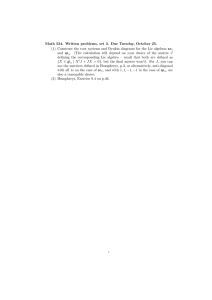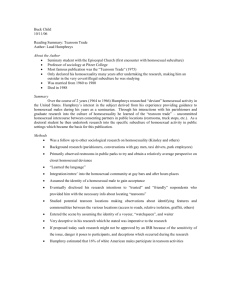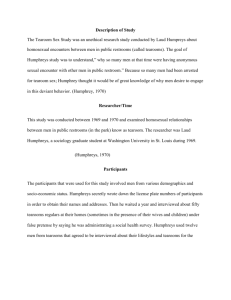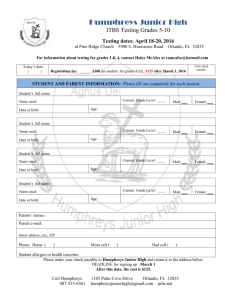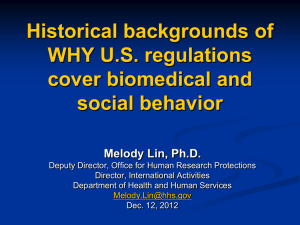Tearoom Trade: Ethical Case Study
advertisement
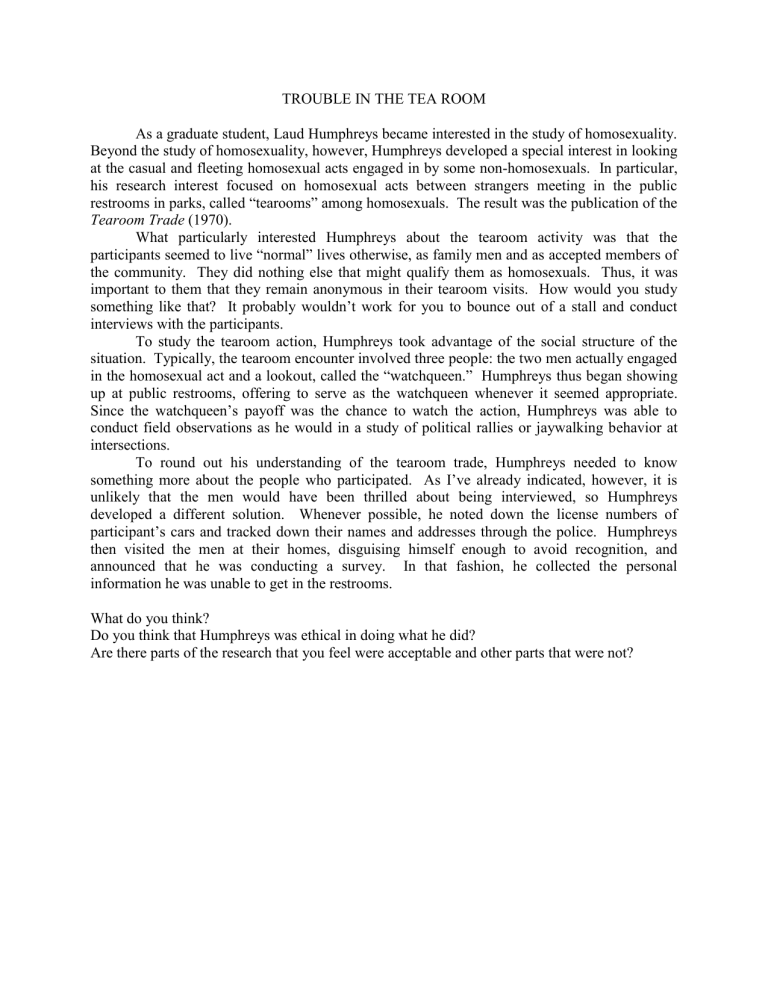
TROUBLE IN THE TEA ROOM As a graduate student, Laud Humphreys became interested in the study of homosexuality. Beyond the study of homosexuality, however, Humphreys developed a special interest in looking at the casual and fleeting homosexual acts engaged in by some non-homosexuals. In particular, his research interest focused on homosexual acts between strangers meeting in the public restrooms in parks, called “tearooms” among homosexuals. The result was the publication of the Tearoom Trade (1970). What particularly interested Humphreys about the tearoom activity was that the participants seemed to live “normal” lives otherwise, as family men and as accepted members of the community. They did nothing else that might qualify them as homosexuals. Thus, it was important to them that they remain anonymous in their tearoom visits. How would you study something like that? It probably wouldn’t work for you to bounce out of a stall and conduct interviews with the participants. To study the tearoom action, Humphreys took advantage of the social structure of the situation. Typically, the tearoom encounter involved three people: the two men actually engaged in the homosexual act and a lookout, called the “watchqueen.” Humphreys thus began showing up at public restrooms, offering to serve as the watchqueen whenever it seemed appropriate. Since the watchqueen’s payoff was the chance to watch the action, Humphreys was able to conduct field observations as he would in a study of political rallies or jaywalking behavior at intersections. To round out his understanding of the tearoom trade, Humphreys needed to know something more about the people who participated. As I’ve already indicated, however, it is unlikely that the men would have been thrilled about being interviewed, so Humphreys developed a different solution. Whenever possible, he noted down the license numbers of participant’s cars and tracked down their names and addresses through the police. Humphreys then visited the men at their homes, disguising himself enough to avoid recognition, and announced that he was conducting a survey. In that fashion, he collected the personal information he was unable to get in the restrooms. What do you think? Do you think that Humphreys was ethical in doing what he did? Are there parts of the research that you feel were acceptable and other parts that were not?
